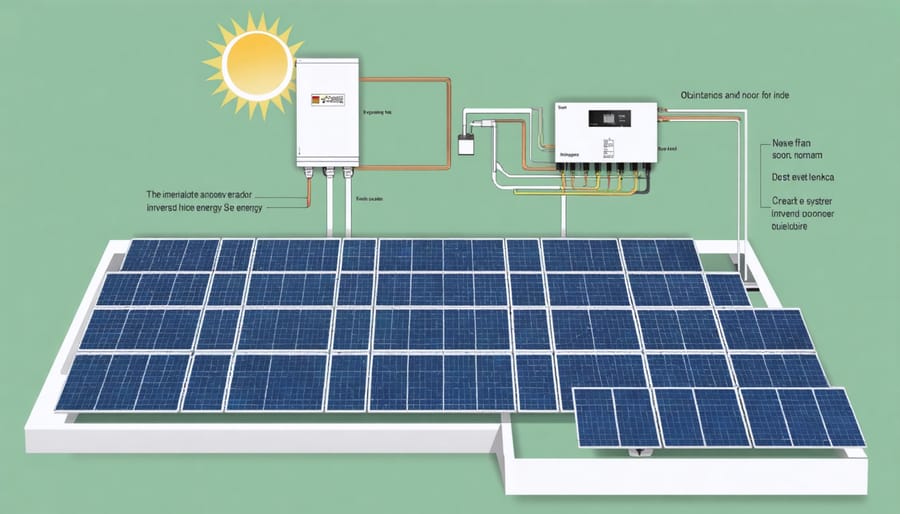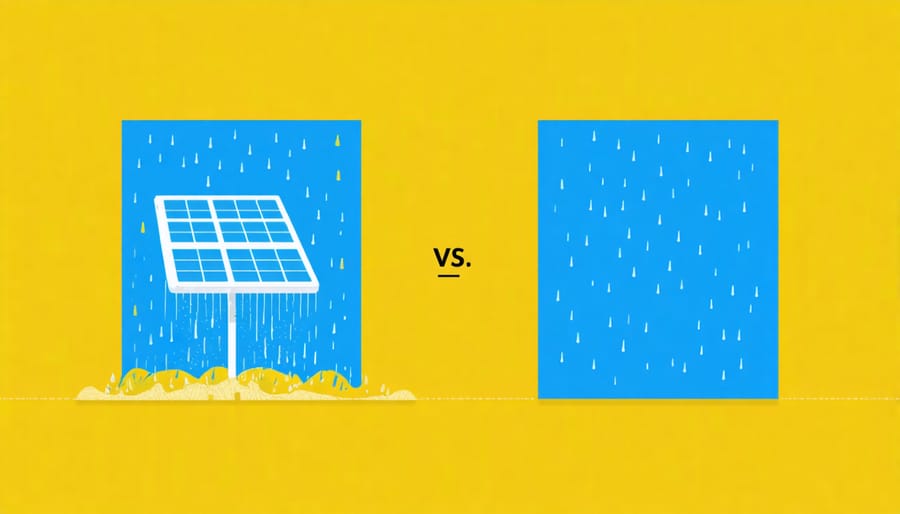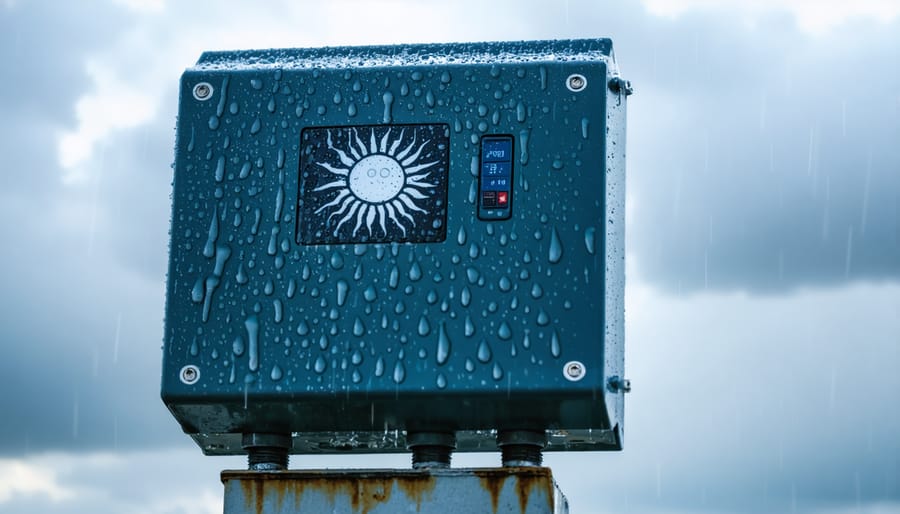Protect your solar inverters from water damage with IP-rated enclosures that shield against rain, splashes, and moisture. Solar inverters typically have IP65 or higher ratings, meaning they can withstand water jets from any direction. However, for added peace of mind, install inverters under covered areas like roofs or awnings to minimize direct water exposure. Regularly inspect inverter housing for cracks, loose seals, or damage that could compromise water resistance.
Understanding Solar Inverters

What Do Solar Inverters Do?
Solar inverters play a critical role in solar energy systems by converting the direct current (DC) electricity generated by solar panels into alternating current (AC) electricity, which is the standard type of power used in homes and businesses. This conversion process is essential because most electrical appliances and devices are designed to run on AC power. Without a properly functioning inverter, the energy harnessed from the sun cannot be effectively utilized to power our daily lives. Inverters also optimize the performance of solar panels by ensuring they operate at their maximum power point, thereby increasing the overall efficiency of the system.
Types of Solar Inverters
There are three main types of solar inverters used in residential and commercial setups: string inverters, microinverters, and power optimizers. String inverters are the most common and cost-effective option, converting DC electricity from multiple solar panels into AC power. Microinverters are installed on each individual panel, allowing for panel-level monitoring and optimized performance. Power optimizers are a hybrid solution, combining the benefits of string inverters and microinverters. The choice of inverter depends on factors such as system size, shading, and budget. Regardless of the types of inverters used, proper weatherproofing is crucial to ensure reliable operation in various environmental conditions.
Weatherproofing and IP Ratings
What Does ‘Waterproof’ Really Mean?
When a solar inverter is described as “waterproof,” it typically means that it has been designed and tested to withstand exposure to water without suffering damage or loss of function. However, there is a difference between being water-resistant and fully waterproof. Water-resistant inverters can handle some exposure to moisture, such as light rain or splashing, but they are not designed for complete submersion. In contrast, fully waterproof inverters can be submerged in water without any negative effects on their performance. It’s important to understand this distinction when evaluating the suitability of an inverter for your specific installation environment and weather conditions in Australia.
IP Ratings Explained
Inverter components are protected against water and dust ingress using the IP rating system. IP stands for “Ingress Protection” and is followed by two digits. The first digit indicates protection against solid objects, ranging from 0 (no protection) to 6 (total protection against dust). The second digit denotes liquid ingress protection, from 0 (no protection) to 8 (protected against long periods of immersion under pressure).
For solar inverters, an IP rating of IP65 is common. This means the inverter is completely dust-tight (6) and protected against low-pressure water jets from any direction (5). IP67 offers the same dust protection but can withstand temporary immersion in water. IP68 is the highest rating, indicating protection against complete, continuous submersion.
While IP65 and above provide good water resistance for most weather conditions, it’s important to note that these ratings are based on controlled tests. In real-world applications, factors like aging, wear, and extreme weather events can compromise the inverter’s sealing over time. Regular inspection and maintenance are crucial to ensure your inverter remains water-resistant throughout its lifespan.
Are Solar Inverters Waterproof?
Outdoor vs Indoor Inverters
When it comes to weatherproofing, the location of your solar inverter makes a big difference. Outdoor inverters are designed to withstand the elements, with robust enclosures that protect against rain, dust, and extreme temperatures. These hardy units typically have an Ingress Protection (IP) rating of IP65 or higher, indicating superior resistance to water and particle intrusion. In contrast, indoor inverters are meant for sheltered installations and generally have lower IP ratings, often around IP20. While indoor models are not exposed to direct rainfall, they still need proper ventilation and protection from humidity to function reliably. Choosing an inverter with the right weatherproofing for your installation environment is crucial for long-term performance and safety. Whether you opt for an outdoor or indoor unit, following manufacturer guidelines and local electrical codes is essential to ensure your solar system stays high and dry.
Typical Inverter IP Ratings
Solar inverters typically have Ingress Protection (IP) ratings that indicate their level of resistance to water and other environmental factors. The most common IP ratings for solar inverters range from IP54 to IP66. An IP54 rating means the inverter is protected against limited dust ingress and water spray from any direction, while IP66 indicates complete dust protection and resistance to powerful water jets. Some high-end inverters may even have an IP67 rating, allowing for temporary submersion in water. However, it’s important to note that even with these IP ratings, inverters are not entirely waterproof and should still be installed in a location that minimizes exposure to rain and moisture. Understanding the IP rating of your specific inverter model can help you determine the appropriate installation location and any additional weatherproofing measures needed to ensure optimal performance and longevity.

Manufacturer Differences
While most solar inverters offer some degree of weather protection, the level of waterproofing can vary between manufacturers and specific models. Some brands may prioritize high IP ratings and robust weatherproofing as key selling points, while others focus more on efficiency or advanced features. When comparing inverters, it’s important to check the specifications and IP ratings provided by each manufacturer to ensure the model you choose offers sufficient protection for your climate and installation location. Consulting with a professional solar installer can also help you identify the best inverter brands and models for your specific needs and environment.
Best Practices for Protecting Your Inverter
Proper Inverter Placement
Installing solar inverters in sheltered locations is the best way to protect them from water damage. While many inverters have built-in weatherproofing, placing them in a covered area such as a garage, shed, or under an eave can provide additional protection from rain and moisture. This simple step can help extend the lifespan of your inverter and ensure optimal performance of your solar power system. If a fully enclosed location isn’t possible, consider mounting the inverter vertically to minimize water pooling on top of the unit. By taking these precautions, you can safeguard your investment in clean, renewable energy for years to come.
Additional Weatherproofing
If your solar inverter’s built-in water resistance isn’t sufficient for your location’s weather conditions, there are several ways to boost protection. Installing the inverter in a sheltered spot, such as under an eave or in a weatherproof enclosure, can shield it from direct rain and moisture. Applying a waterproof sealant around cable entry points and edges can prevent water intrusion. For extreme conditions, consider housing the inverter in a dedicated weatherproof cabinet with proper ventilation to maintain optimal operating temperatures. Remember to check your inverter’s IP rating and consult with a professional installer to determine the best weatherproofing solutions for your specific setup and environment.
Conclusion
In summary, while solar inverters are designed to withstand some exposure to the elements, they are not completely waterproof. It’s crucial to check the IP rating of your inverter to understand its level of protection against water ingress. Taking precautions such as installing inverters in sheltered locations, using weatherproof enclosures when necessary, and regularly inspecting for signs of moisture damage can help ensure the longevity and optimal performance of your solar power system. By prioritizing the protection of your inverter from water and other environmental factors, you can maximize the benefits of clean, renewable energy for your home or business.

